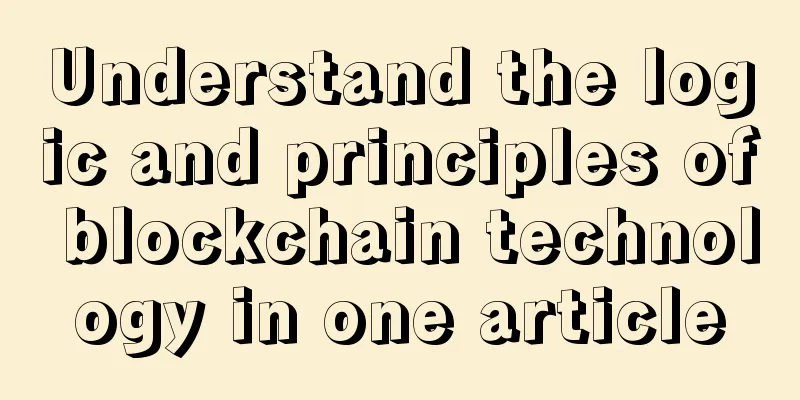EIP-1559 creator: EIP-1559 cannot solve Ethereum congestion and high fee problems

|
Despite a sharp pullback in the past few days, ETH’s value has risen nearly 30% since the beginning of April, from $1,800 to a peak of $2,480. Ethereum has risen amid criticism over network congestion and rising transaction costs. To put this into perspective, the average cost of transacting on the Ethereum ecosystem has been hovering in the $16-20 range since the second half of February, making it impractical for individuals looking to facilitate smaller transactions to take advantage of the platform. In fact, on February 23, the value of the aforementioned fees spiked to an all-time high of $42, causing discontent throughout the cryptocurrency community. The Ethereum network recently underwent a hard fork called “Berlin,” which in the most basic sense can be considered a network upgrade that contained four Ethereum Improvement Proposals that were intended to modify the ecosystem’s gas fee requirements and allow for new transaction types. The Berlin Update appears to be laying the groundwork for the larger London Hard Fork, which will activate EIP-1559: a much-debated, albeit controversial, overhaul of Ethereum’s existing fee structure. Can EIP-1559 solve all of Ethereum’s troubles?While on the surface the upcoming London Hard Fork promises to achieve ambitious goals, it is still very interesting to delve deeper into whether EIP-1559 will be the long-term solution that Ethereum needs to permanently resolve its scalability issues. Cointelegraph spoke with Abdelhamid Bakhta, one of the six lead authors of EIP-1559, who noted that as things stand, there is a lot of misinformation and half-baked knowledge floating around on the web regarding the upcoming London upgrade. First, Bakhta clarified that reducing the current congestion and high fees is not the purpose of EIP-1559, which is intended to try to introduce the concept of "block elasticity," which means that the theoretical maximum capacity of the platform will be doubled. He further added: Transaction fees are a function of supply and demand. Technically, the average available block space will not increase, as the design of the base fee mechanism is biased towards half the maximum block capacity. So the short answer is “no”, this upgrade will not be the long-term solution that Ethereum needs to solve its scalability issues.” However, on a more optimistic note, he did add that as more layer-two solutions continue to be adopted, all networks’ fee and congestion issues will eventually be resolved. Regarding miners’ dissatisfaction with the proposed 50% reduction in their mining rewards rate after the London hard fork, Bakhta believes that it is clear to see why some miners are against the proposal. He added: “With gas fees reaching their highest level in years, Ethereum mining has become a full-fledged business in itself.” However, he did point out that miners already knew their operations would end when Ethereum eventually transitioned to the PoS framework, adding that while he knew the cuts would be hard to swallow, the change was inevitable. Bakhtar further noted: “It’s not that they were unaware of the proposal. The idea was first proposed by Vitalik in a July 2018 article titled “First and Second Price Auctions, Improving Transaction Fee Markets.” Second layer solutions are always neededJan Strandberg, co-founder and chief growth officer of DeFi platform Yield App, offered his thoughts on how the upcoming EIP-1559 could help the Ethereum ecosystem, noting that while the upgrade might bring some relief to developers and DeFi traders tired of high gas fees and long wait times, it’s a short-term solution to Ethereum’s most significant problem. He believes that the real breakthrough will only be witnessed when Eth2 finally goes live, which will allow the network to scale its transaction capacity from 15 transactions per second to 100,000 transactions per second. He went on to add: "This will be a real game changer - not only for Ethereum, or even for DeFi, but potentially all cryptocurrencies. It will pave the way for true mainstream adoption. Therefore, it seems that the upcoming London hard fork will fundamentally only change the peripheral economics of Ethereum without having a significant impact on scalability. Anton Bukov, co-founder of DEX aggregator 1inch Network, told Cointelegraph that he would be surprised if the upcoming London hard fork goes live even before September. Regarding Ethereum’s scalability issues, he agreed that the focus should be on Layer 2 solutions rather than considering EIP-1559 as the final solution. “I’m inspired by Matter Labs’ zkPorter, which should help Ethereum reach 20,000 TPS. Can’t wait to see Ethereum switch to PoS to allow ETH holders to manage network upgrades.” Potential risks associated with EIP-1559Speaking about the potential gray areas associated with EIP-1559, Bakhta believes that, as things stand, the Ethereum developer team appears to have covered all potential risks associated with the aforementioned proposal. He elaborated: “There are two main aspects to consider: economic analysis and performance impact. The purpose of the economic analysis is to determine if the new market model is secure and not vulnerable to attacks. Regarding performance, people are concerned about whether the network can handle twice as large blocks. The answer is yes.” On a more technical note, Bakhta stressed that the team has been able to successfully process blocks that are almost four times the current size of the mainnet, and even larger than what the EIP-1559 proposal brought to the table, adding: “EIP-1559 has been an amazing journey for me. It’s been great to see the collaboration between all the teams, researchers, authors, economists. This is my greatest personal achievement.” Strandberg believes that Eth2 could come down to it. He added: “When Eth2 arrives, we’ll really see something special that’s worth the wait.” Cryptoeconomic networks like Ethereum must constantly balance the security budget needed to keep the system secure with the fees charged to miners. In addition, after the recent sharp increase in gas prices on the Ethereum network, EIP-1559 has emerged as a long-awaited upgrade to support Ethereum’s growing user base. |
<<: Morgan Stanley says central bank digital currencies won’t be a threat to cryptocurrencies
Recommend
What does it mean for a man with a broken eyebrow? How does a man with a broken eyebrow look like?
What does it mean when a man cuts off his eyebrow...
Ant Group’s global ICO crowdfunding has concluded, raising a total of 6,129 bitcoins
At 8:00 pm on September 7, the global ICO crowdfu...
Bitcoin price crash may be linked to mysterious closed-door meeting between miners and Bitcoin Core developers
A closed-door meeting of Bitcoin miners and Bitco...
Characteristics of a woman who is good for her husband
A face that brings good fortune to a husband gene...
YinChain becomes China's first blockchain startup to receive government funding
Recently, according to the Nanjing document "...
Ethereum Foundation officially releases soft fork update to freeze stolen DAO funds
The 2016 International Blockchain Summit was held...
3 common types of women who bring bad luck to their husbands. What kind of women bring bad luck to their husbands?
Women with exposed noses are unlucky for their hu...
The top three provinces in China in terms of the number of blockchain policies released in 2020: Guangdong, Jiangsu, and Zhejiang
The top three provinces in China in terms of the ...
How many times has Bitcoin increased after halving in history?
Start with Historical Data Bitcoin mining began i...
Will Canada be the next mining mecca?
From cryptocurrency startups to major Bitcoin inv...
Women must stay away from men who bring bad luck to their wives. Tell you the facial features of men who bring bad luck to their wives
In life, we all care about whether a woman will b...
The face that does not care about the second solar system
Someone has proposed the idea of a second solar...
Teach you how to identify people by looking at their eyebrows
Teach you how to identify people by looking at th...
Luyitong acquires Bitcoin chip manufacturer for 3 billion
Author: Hey Yaoyao The price of Bitcoin has gone ...
Oval face fortune, good luck in love
A good-looking face shape can sometimes make up f...









